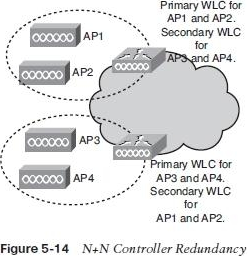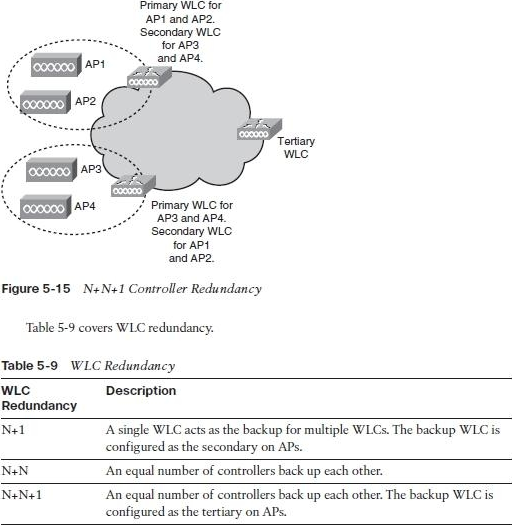With deterministic Wireless LAN Controller redundancy design, the different options available to the designer have their own strengths.
Which one of these statements is an example of such a strength?
A . Dynamic load balancing, or salt-and-pepper access point design, avoids the potential impact of oversubscription on aggregate network performance.
B . N+N redundancy configuration allows logically grouping access points on controllers to minimize intercontroller roaming events.
C . N+N+1 redundancy configuration has the least impact to system management because all of the controllers are colocated in an NOC or data center.
D . N+1 redundancy configuration uses Layer 3 intercontroller roaming, maintaining traffic on the same subnet for more efficiency.
Answer: B
Explanation:
With such an arrangement there is no complex mesh of access points & controllers.
Reference: http://www.cisco.com/web/learning/le31/le46/cln/qlm/CCDA/design/understanding-wirelessnetwork-controller-technology-3/player.html
N+N WLC Redundancy
With N+N redundancy, shown in Figure 5-14, an equal number of controllers hack up each other. For example, a pair of WLCs on one floor serves as a backup to a second pair on another floor. The top WLC is primary for API and AP2 and secondary for AP3 and AP4. The bottom WLC is primary for AP3 and AP4 and secondary for API and AP2. There should be enough capacity on each controller to manage a failover situation.

N+N+1 WLC Redundancy
With N+N+1 redundancy, shown in Figure 5-15, an equal number of controllers back up each other (as with N+N), plus a backup WLC is configured as the tertiary WLC for the APs. N+N+1 redundancy functions the same as N+N redundancy plus a tertiary controller that backs up the secondary controllers. The tertiary WLC is placed in the data center or network operations center


Leave a Reply